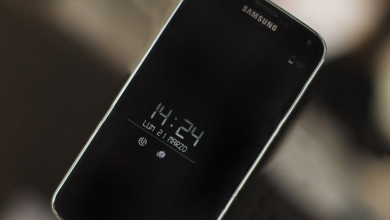How To Cast an Android Phone’s Screen on TV Without Chromecast
Google Chromecast is an essential tool for casting your phone’s screen to your TV. Not only is it user-friendly and easy to set up, Chromecast is quite affordable too; the HD version retails for $30 while the 4K version only costs $50.
However, on Android, there are several free alternatives to Chromecast available. Join us below in learning the different ways of how one can mirror their Android screen on to their TV without the aid of Chromecast.
Table of Contents:
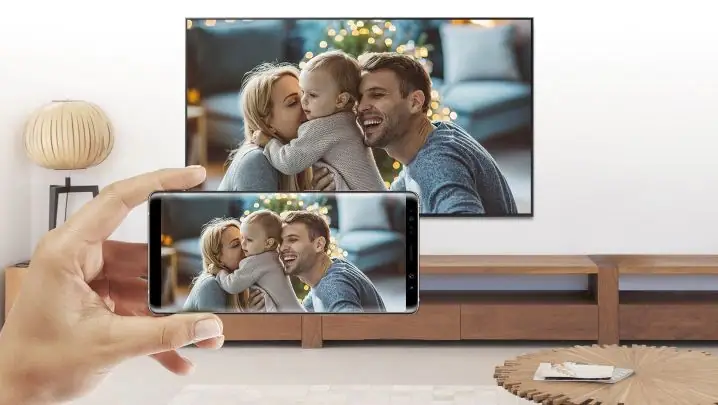
Requirements of Casting
In order to cast your Android phone on to your TV without Chromecast, you’ll need the following things:
- An Android phone running Android 4.2 or higher
- A smart TV with Miracast compatibility
- A decent high-speed internet connection with good upload and download speeds.
Additionally, make sure that your phone and your smart TV are connected on the same Wi-Fi network. Miracast should also be enabled on your TV. If Miracast is not supported on your device, please check out detailed guide on how to fix that.
Method 1: Casting Natively
1. Using the built-in cast feature
As previously mentioned, the cast feature is now a built-in attribute of the Android OS. However, depending on your device’s manufacturer, the name of this feature and how it’s accessed can vary. On most devices, the casting feature can be found under the ‘Connections‘ section in the ‘Settings‘ menu, typically labeled as ‘Cast.
However, Samsung‘s case is different as its cast feature cannot be found in the device settings. Samsung’s cast feature is known as Smart View and is accessed through the notification panel.
2. Casting using Samsung’s Smart View
Here are the steps to cast through Samsung’s Smart View, exclusive to Samsung devices:
- On your home screen, swipe down to open the Notifications Panel. Swipe down once again to open it in its expanded form.
- From the Quick Settings tiles, the Smart View option should be available. Tap on the name.
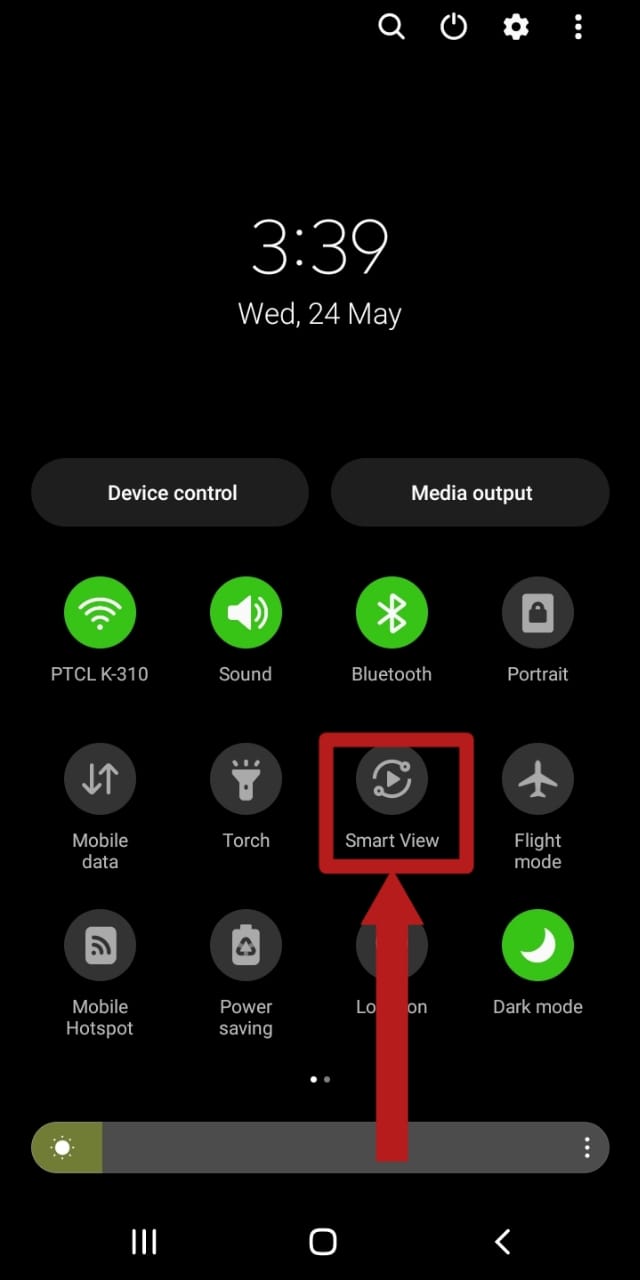
Press the Smart View button - Now, enable the Smart View feature.
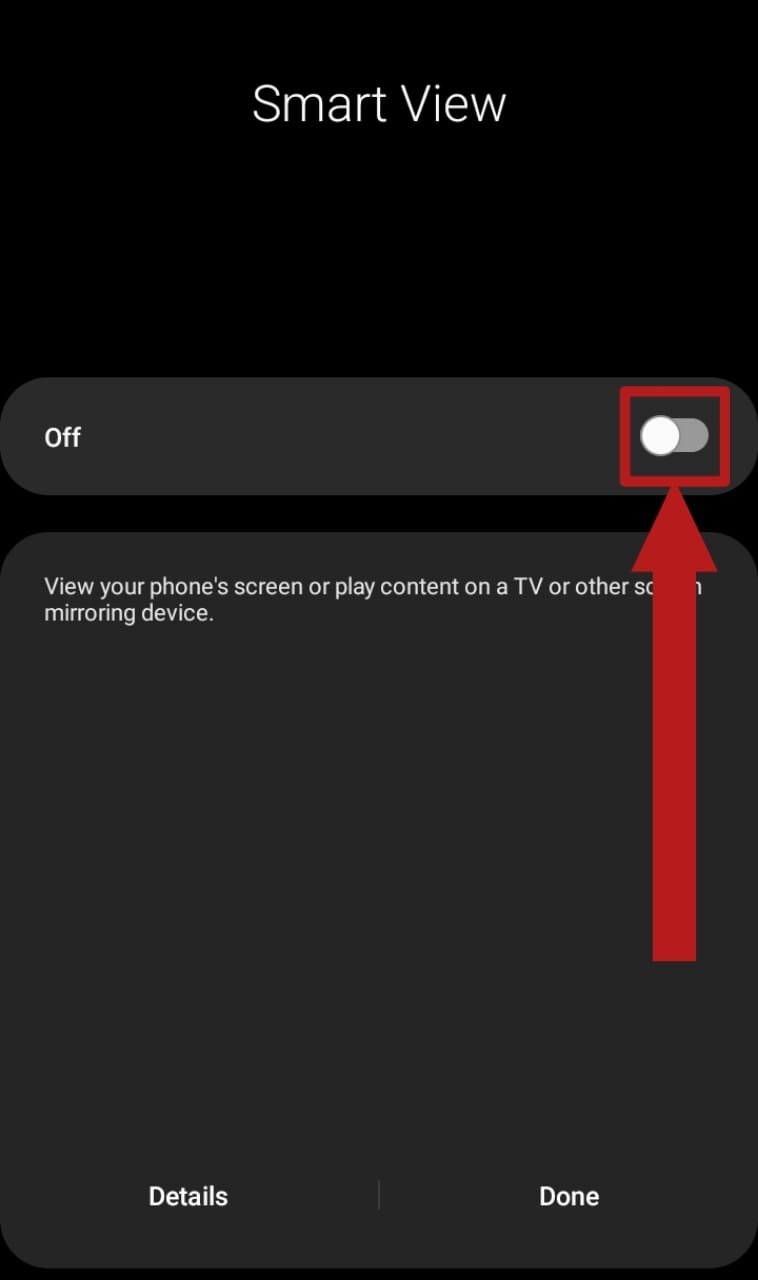
Toggle the switch to enable Smart View - Consequently, a pop-up will appear. This pop-up will explain the attributes of Smart View. Press Next.

Press Next - After pressing Next, you will be asked for permission regarding Smart View using your location and storage. Tap on Continue.
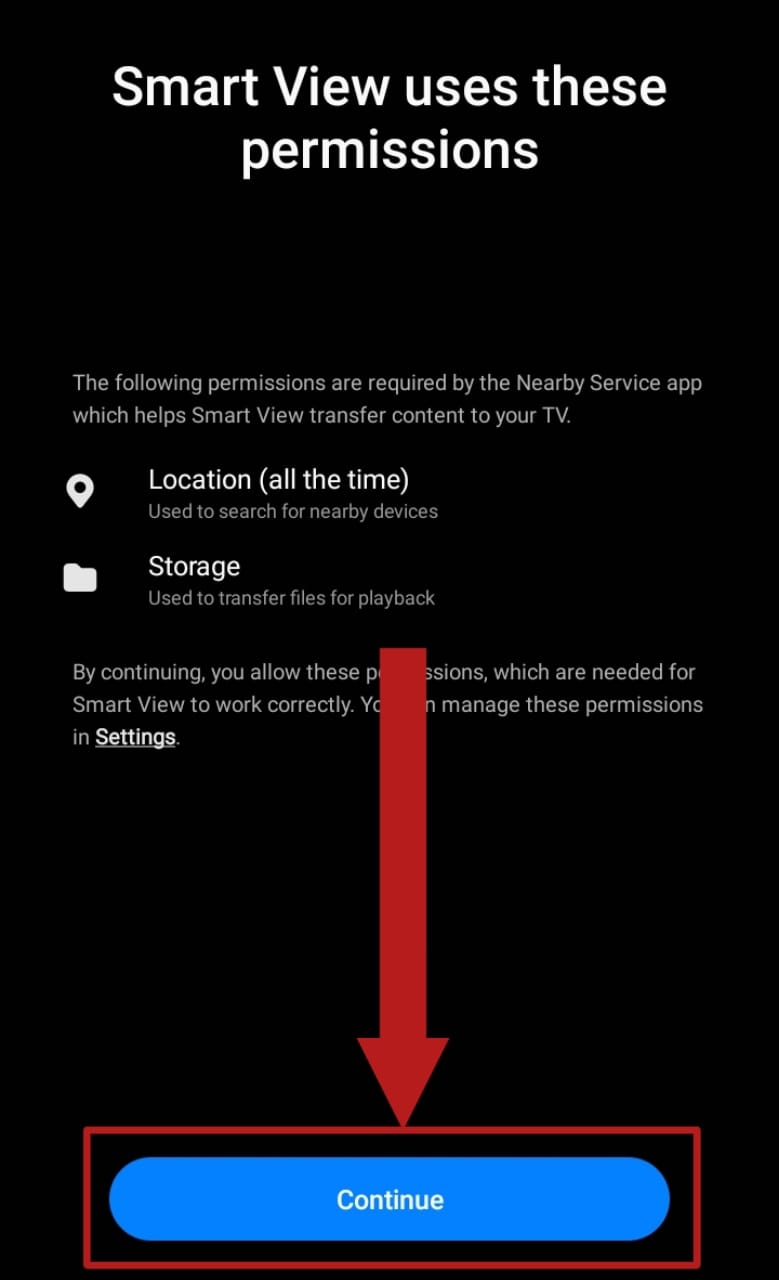
Press Continue - Next, it will begin searching for nearby TVs, or other displays with Miracast support, to cast to.
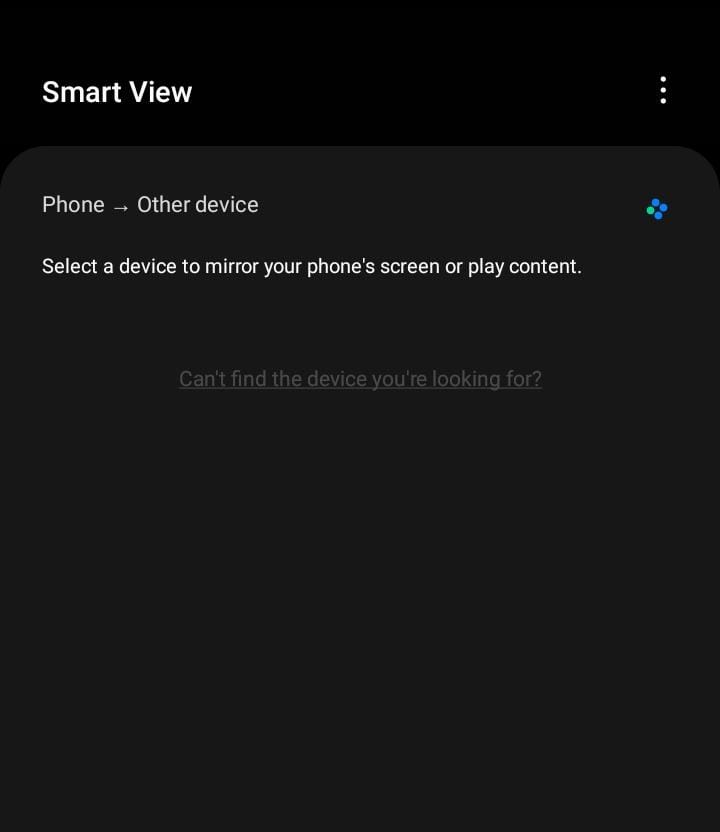
Smart View will begin scanning for displays with Miracast support - Once it picks up your TV, tap on your TV’s name.
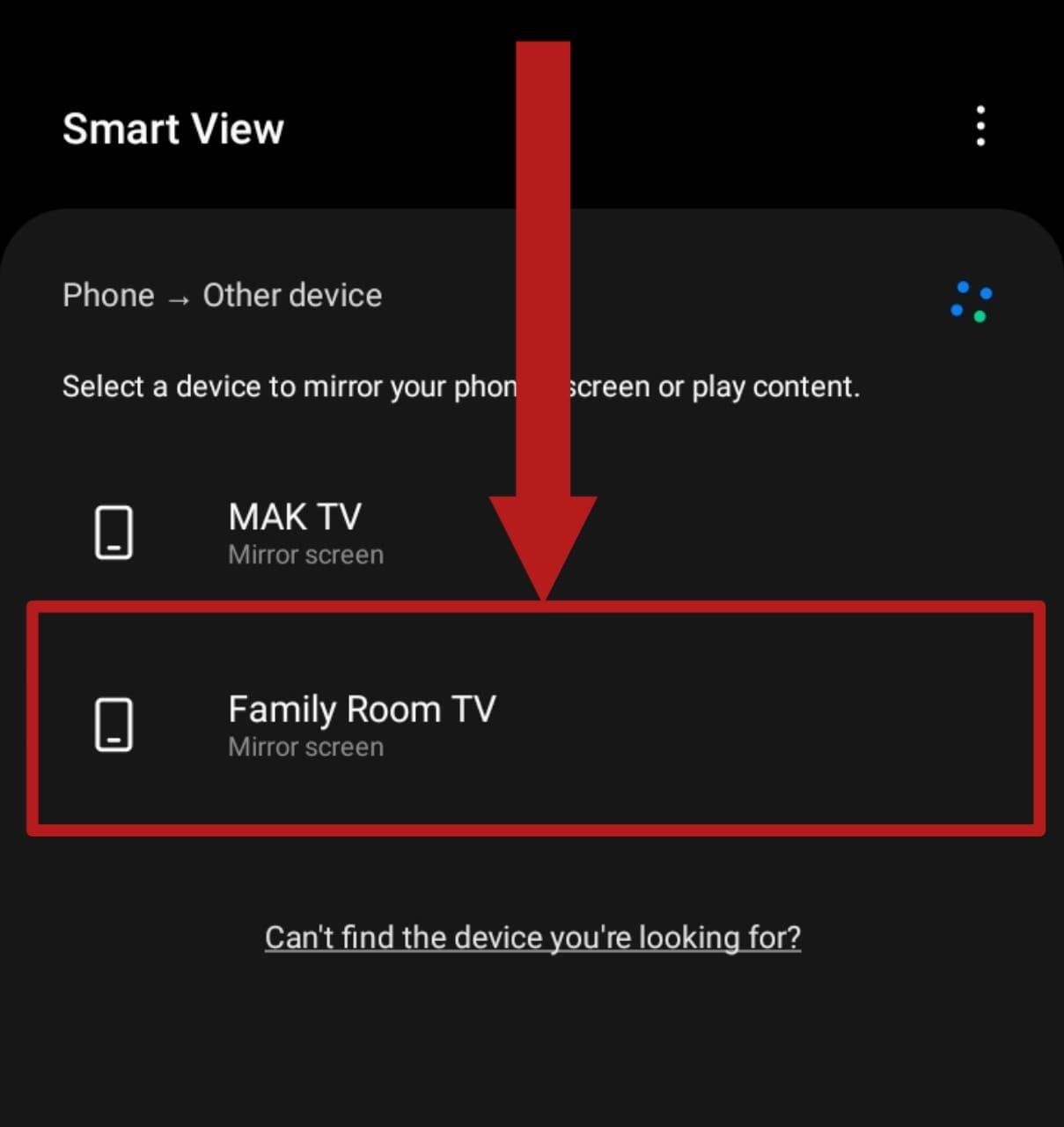
Tap on the name of the desired display - Upon pressing the TV’s name, a pop-up should appear on your TV. The pop-up will ask for permission for letting your phone cast to it. Select Allow or OK, depending on your TV.
- Finally, your phone’s screen will be casted on to your TV.
- To stop casting, simply open the Smart View from the Quick Settings panel as you did earlier. Toggle to switch off to disconnect your phone to your TV and stop casting.

Toggle the switch off
3. Using the in-app cast feature
Some popular streaming apps have added a built-in cast feature so that you can enjoy your favorite movies, TV shows, or videos on a big screen. YouTube and Netflix are example of such apps. However, through this method, you can only cast that specific app. Regardless, here’s how to cast your favorite YouTube videos:
- Open the YouTube on your phone.
- On the home page, next to the Search button, should be the Cast button. The Cast button is a rectangle with Wi-Fi signals originating from the bottom right corner. Press it.

Tap on the Cast button - Your phone will begin scanning for displays with Miracast support. Once your TV is detected, press on its name.
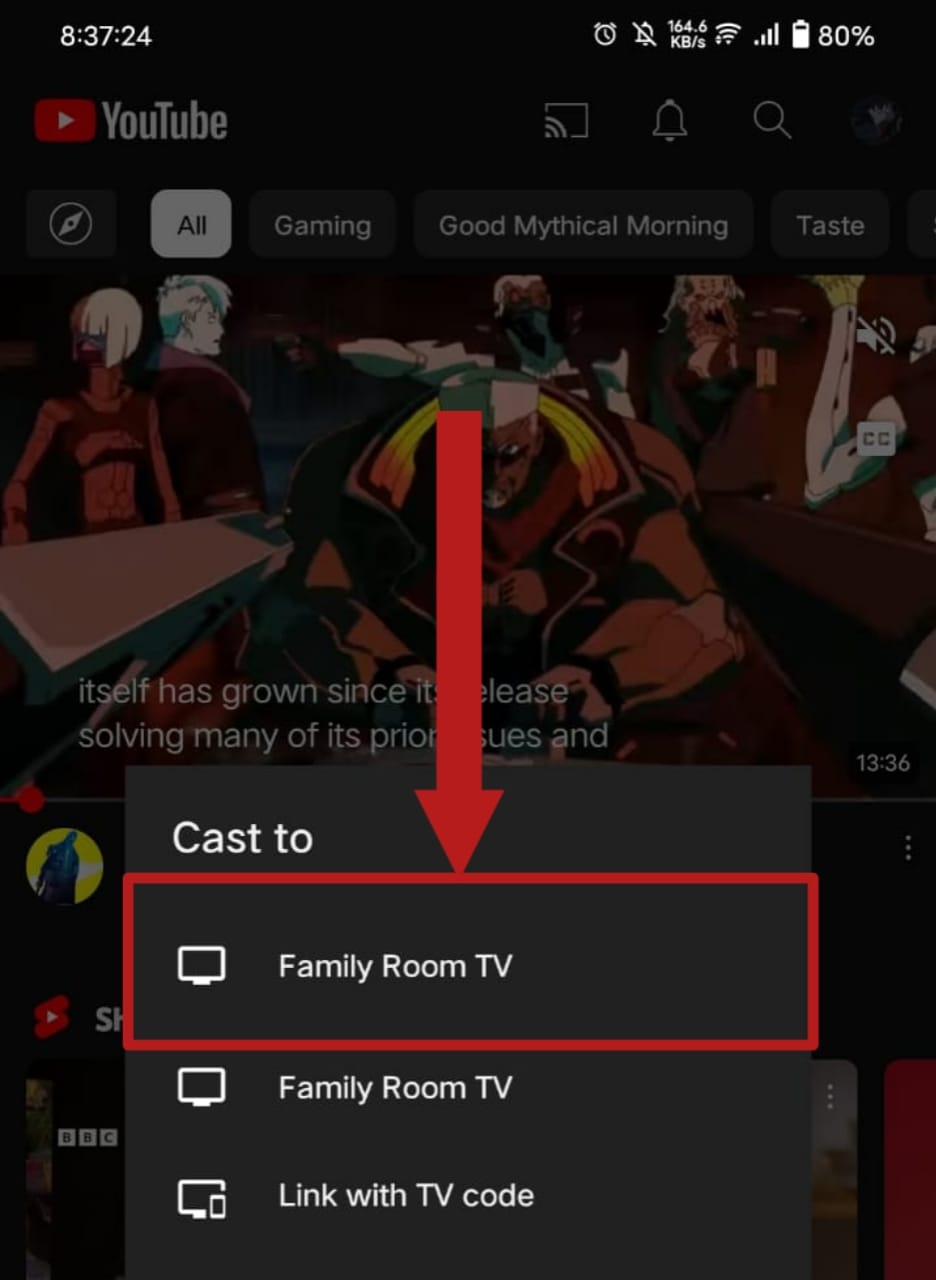
Select your TV - Consequently, your TV will ask for confirmation to connect. Allow it. YouTube should open up on your TV.
- Now, you can play any YouTube video from your phone on your TV. Tap on the video you want to play. A pop-up should open. Press Play to begin playing the video on your TV.

Press Play - To stop casting at any time, press the Cast button on the home page like you did before. On the pop-up that appears, press Disconnect to stop casting.
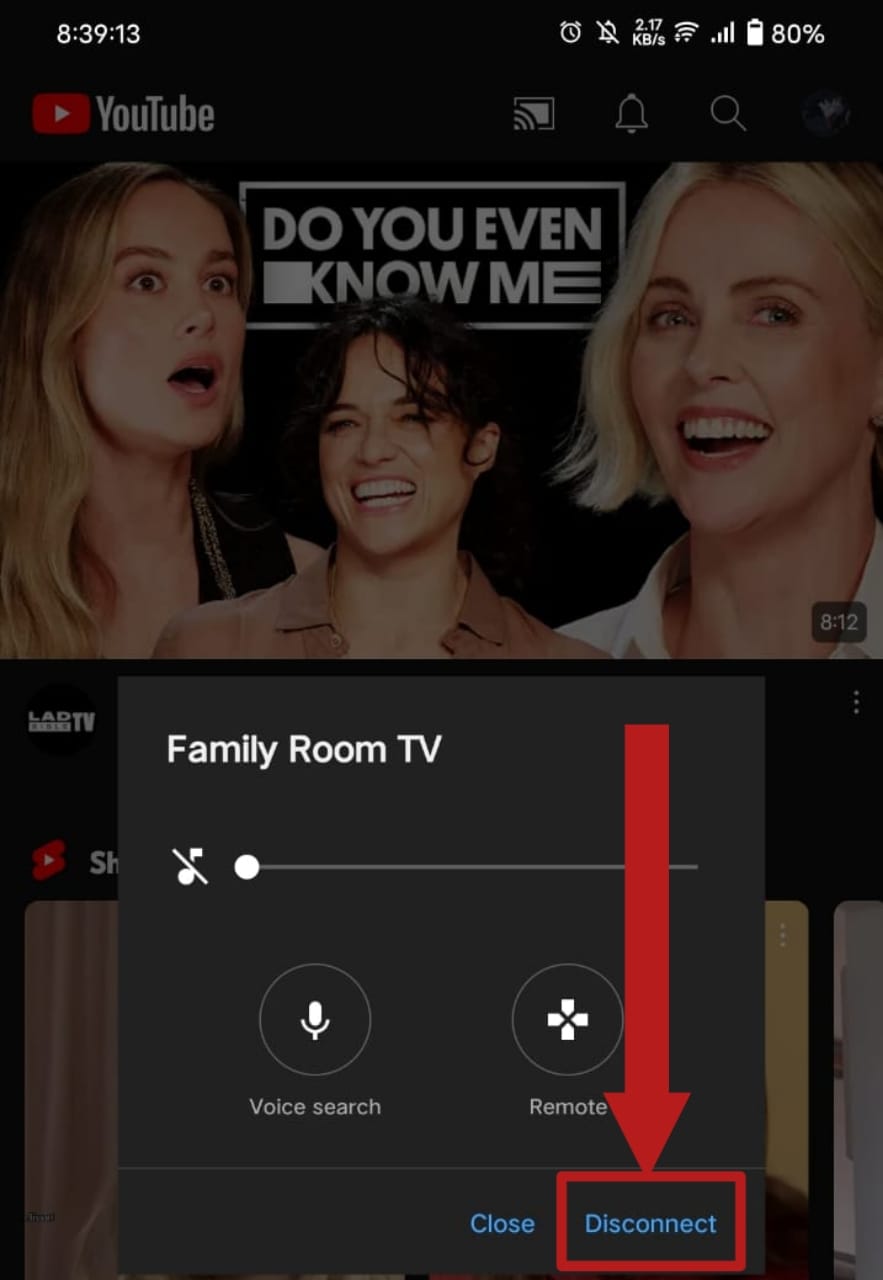
Press Disconnect to stop casting
If you’re trying to stream YouTube from your phone to your TV in order to avoid ads, check out our guide on how to get ad-free YouTube on Android/Google TV.
Method 2: Casting Using a Third-Party App
Another way to cast your phone’s screen on to your TV is to make use of third-party apps available on the Google Play Store. There are a lot of apps to choose from but the best are BubbleUPNP, AllCast, Cast to TV, etc.
Below are the steps to cast using the Cast to TV app:
- Download the app from the Google Play Store and open it.
- Depending on what you want to cast, you can choose from the options displayed; Videos, Photos, Audios, or Screen Mirroring. We’ll be choosing Screen Mirroring.

Choose whatever you want to cast - Once the choice is made, the app will display a list of conditions you need to fulfill before proceeding further. Once they have been satisfied, press Connect.

Tap on Connect after satisfying the requirements - The app will take you to your phone’s cast setting and begin scanning for displays. Select your TV when it shows up.

Choose your TV from the list of available devices - Once your TV is selected, your phone will ask for confirmation to begin casting. Your TV may do this too. Allow it.
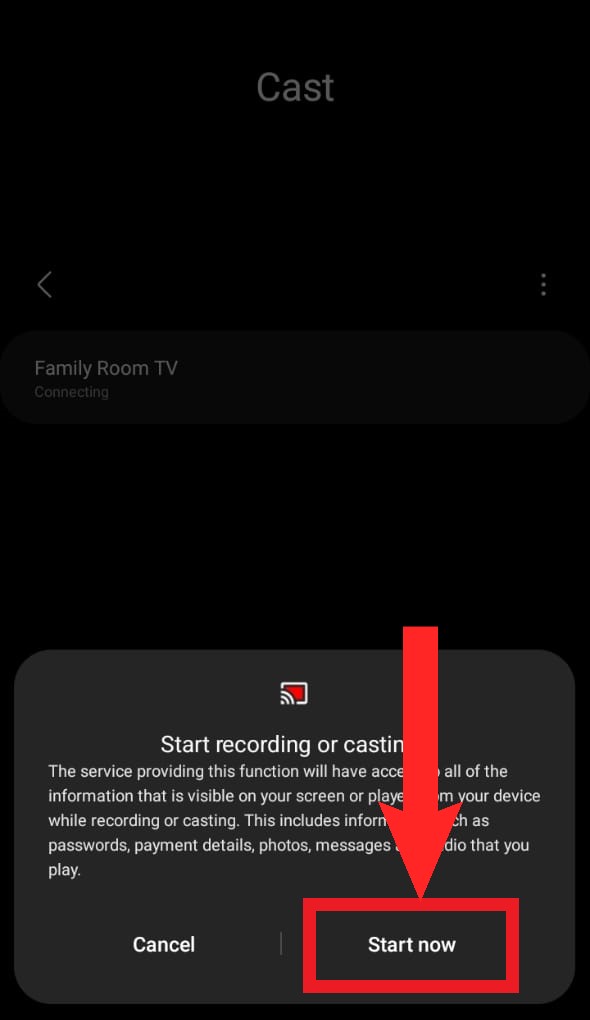
Allow casting - The casting process will have started. To stop it at any time, swipe down to open your Notifications Panel and select Disconnect on the casting notification.
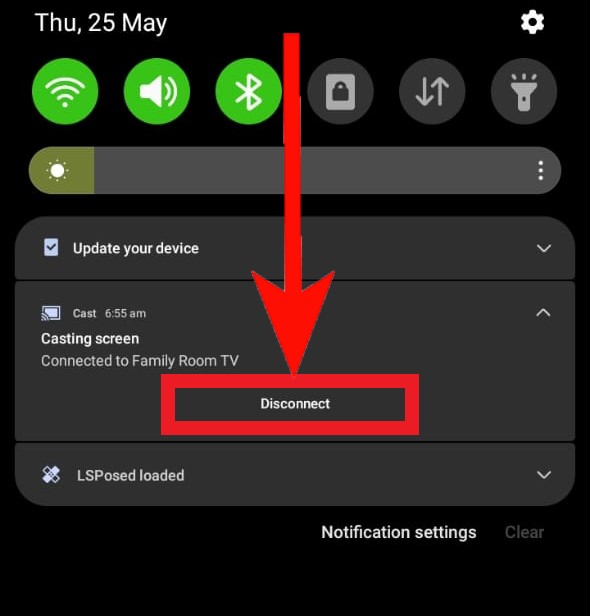
Select Disconnect from the Notifications Panel to stop casting
Method 3: Casting Using Phone-to-HDMI Adapters
Technically speaking, this method is not exactly casting. However, since the aim of this tool is to achieve the same goal as casting, we’ve decided to include it. Phone-to-HDMI adapters are extensions that allow you to connect a HDMI cable and establish a connection between your TV and phone.
A key advantage of using this adapter is that it allows screen sharing without the need for Wi-Fi. It also doesn’t require your TV to be a smart TV with Miracast support; all you need is an HDMI slot. Fortunately, HDMI slots are extremely common and can be found on virtually all TVs. In fact, you can also connect a laptop or Apple device using this method to mirror their screens.
Phone-to-HDMI adapters may come in different types depending on what type of charging cable you use. Since most Android phones use Type-C cables, USB-C-to-HDMI cables should be your choice. If you have an older device using a micro-USB cable, you can find micro-USB-to-HDMI too. Amazon offers a wide selection of these adapters.

Casting Off
Casting is a fantastic tool for presentations, movie nights, or photo slideshows. While Chromecast simplifies the process and offers a host of other features, it might be a bit pricey for some. This is where cost-effective alternatives come into play, enabling you to cast to any available display without relying on Chromecast.
 Reviewed by
Reviewed by 


